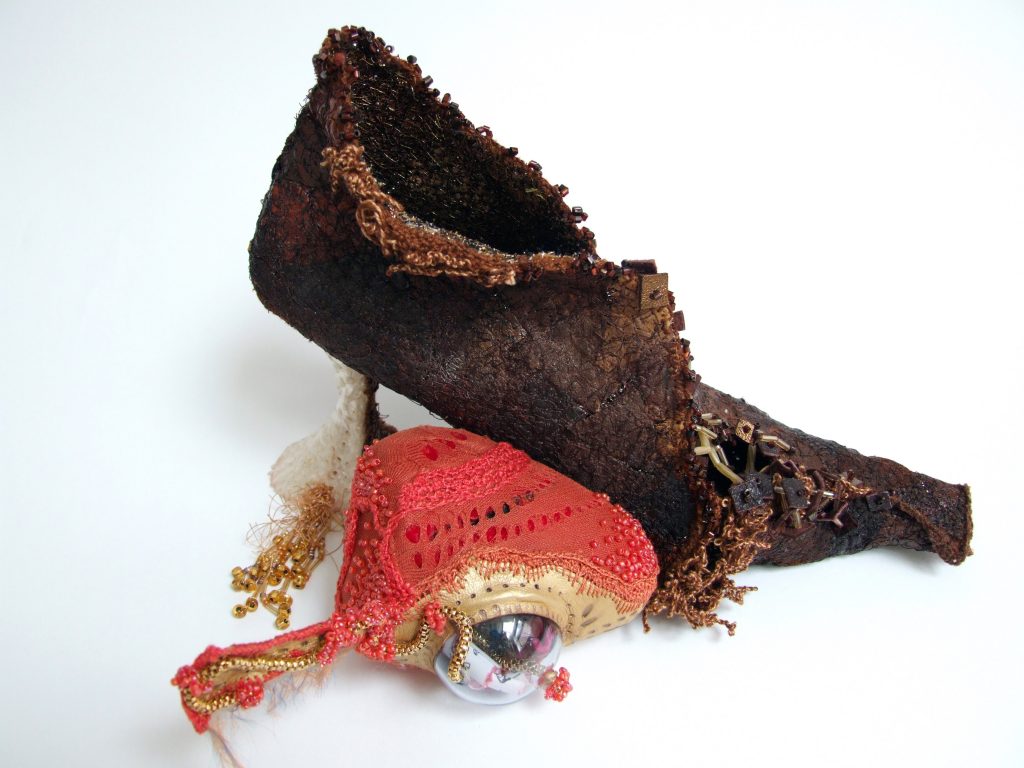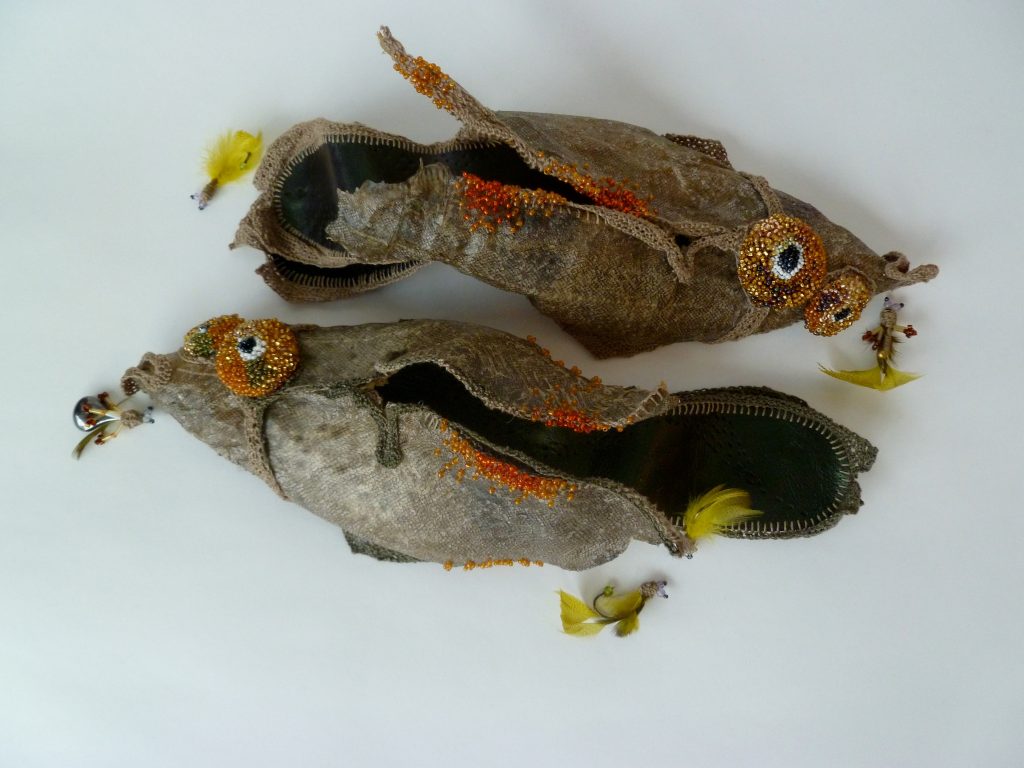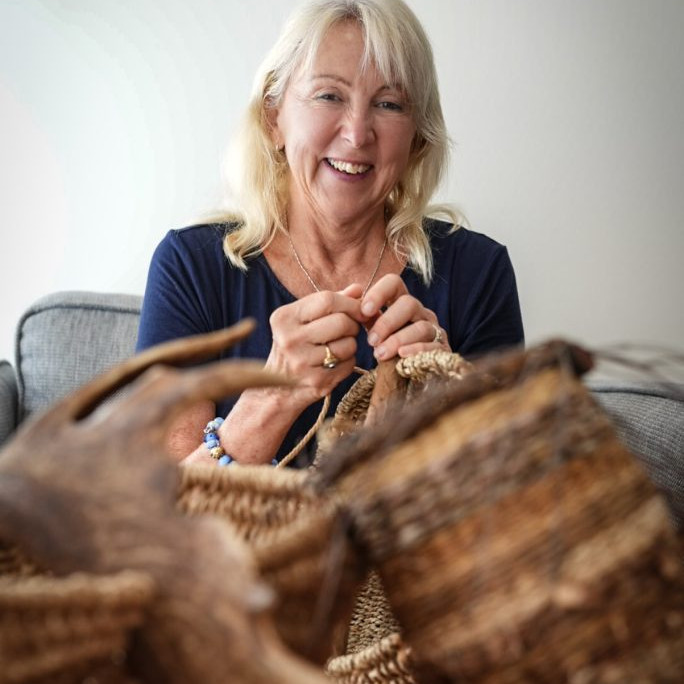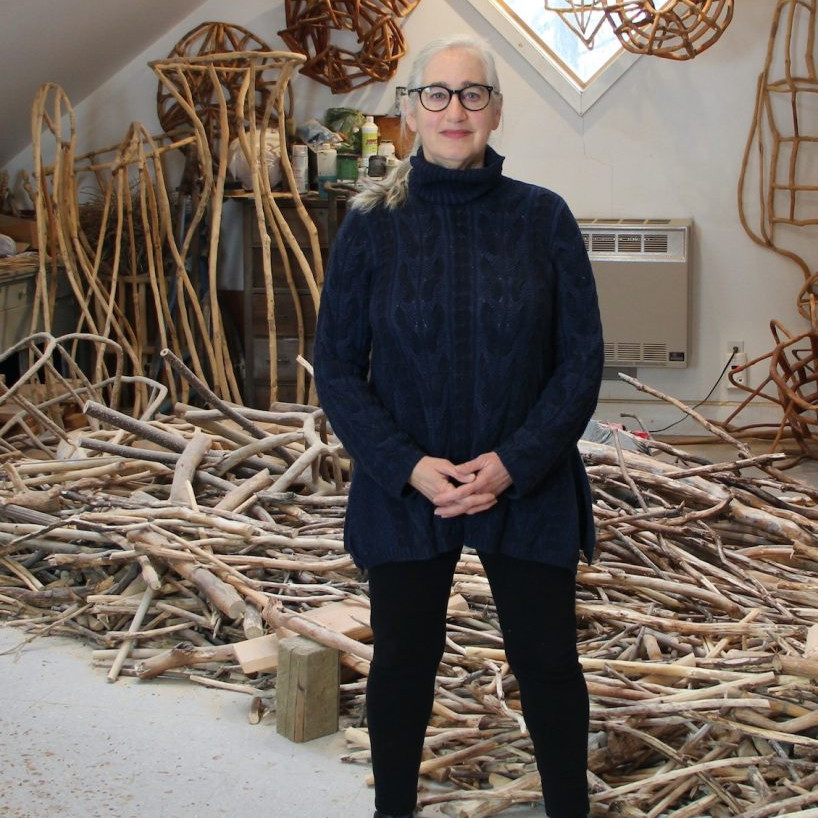Helen McAllister Textile Sculptor
Explain about your training both PHD in Practice Design and MA in Embroidered Textiles.
The Embroidery interest emerged in my final years in school. A small school yet with a large and vibrant art department. This Embroidery trajectory continued through undergraduate, postgraduate and PhD. It was a medium that I felt had no limits, use and exploit and I could do it! I felt I was never a slave to the processes or techniques of embroidery but could make them work for me. After some years after undergraduate I undertook an MA in Embroidery where I wanted to rebrand and re imagine my practice. To that point the embroidery outcomes had been 2D image based work, yet I was questioning ‘Was this it?’ The MA saw moving from 2D to that 3D thinking. There was a perceived decorative ‘read’ of my work that now focused on Venetian history / cultural and materiality resulting in the Shoe form and narrative that captured the research and the rebranding of my practice. The practice based PhD focused on the need to make. The outcomes were not illustration to a written text but formed ‘chapters’ in themselves that questioned the materials and processes used and testing these outcomes with new discursive audiences.

‘Walking on Water’- series, detail
Discuss how you work from one level to another. Reality, shoes to assembling shapes and colour in the abstract.
I trained through design practices and principles, therefore the starting point was about sampling, knowing the potential of a given material or process.
When in production of a series or multiplies, I often found it was easier to think in terms of assembly line, completing some aspects of a form but continually comparing it with the paired / partnered form, crossing over from one to another, as opposed to completing one form in isolation and moving on to the next form.
Why are you so drawn to shoes?
The shoe surfaced during my MA which coincided with a resurgent interest in new shoe designers, yet that was pure coincidence, it was the shoe form I found wonderful, with no two view points are the same with its inside and outside.
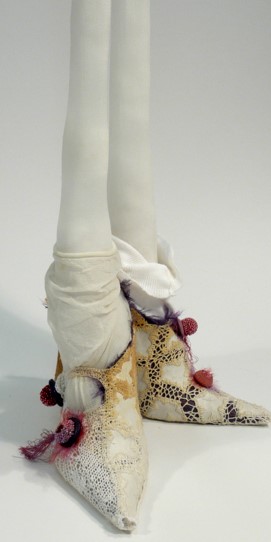
Tight Series
The scale was small, intimate, and hand-held. It was a revelation to me that I saw and thought 3 dimensionally which I continue to do so. The shoe object is such an iconic social signifier, codifier, narrator and protagonist. In Venetian historical fashion and cultural the ‘Chopine’ became a unique shoe form of ‘improbability’ that continues to fascinate me. This forged and completed the partnership of embroidery, Venice and the shoe. I cannot have one without the others.
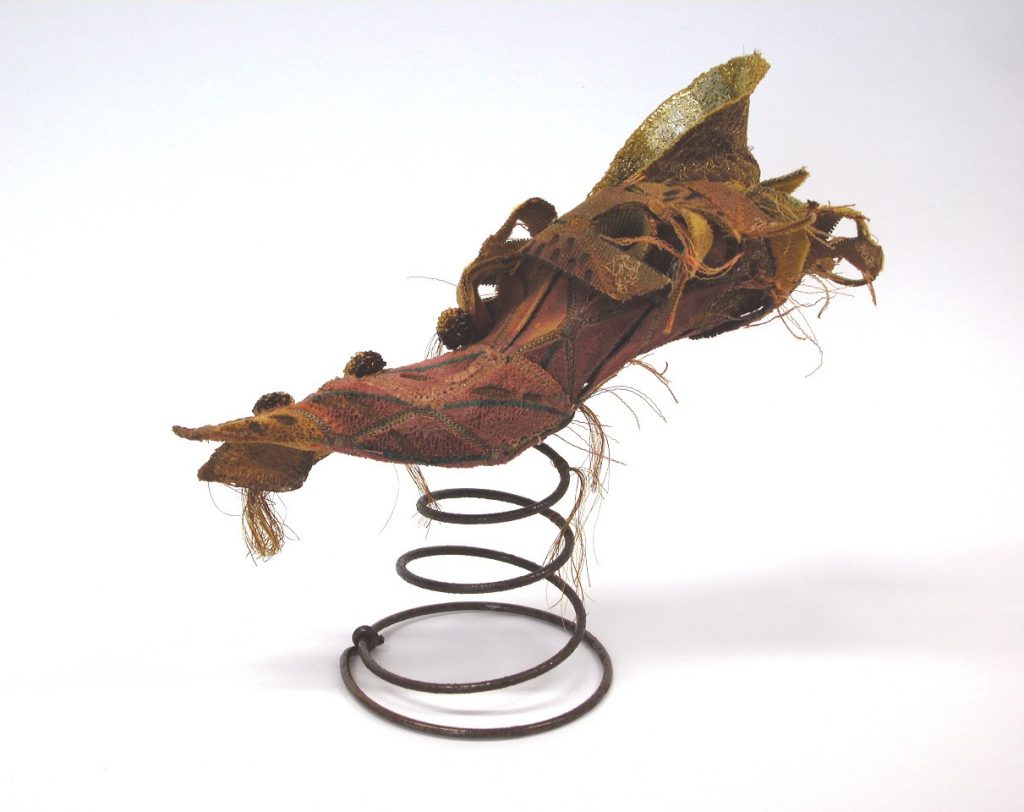
’Improbability’ Series – ‘A Spring in Her Step’
Comment on the connection of Venice and Belfast in your work and on the ‘Venetian Water Series’.
The shoe forms I created were protagonists and narrators. As part of the narration, I looked at self narration; the shoe was able to reflect the different periods of my life. At first, coming from Belfast and study in and of Venice seemed to have no connection, yet with time, I found they were complimentary. A piece of work that seems to some up all my influences and interests was called ‘Shattered Steps’. This piece at first glance is colourful, with rich surfaces, with its glass beading referenced Venice, (glass being sinominous with Venice). Yet the glass shards used had been collected in the 1980’s from a bombed church in Belfast. I had collected these shards which seemed like precious delicate mementos. I had not known what to do with them, as they sat in a box for many years. It was not until making ‘Shattered Steps that the shards made a perfect pairing of glass from wanton destruction of my Belfast roots now incorporated into this Venetian ostentatious impractical shoe form.
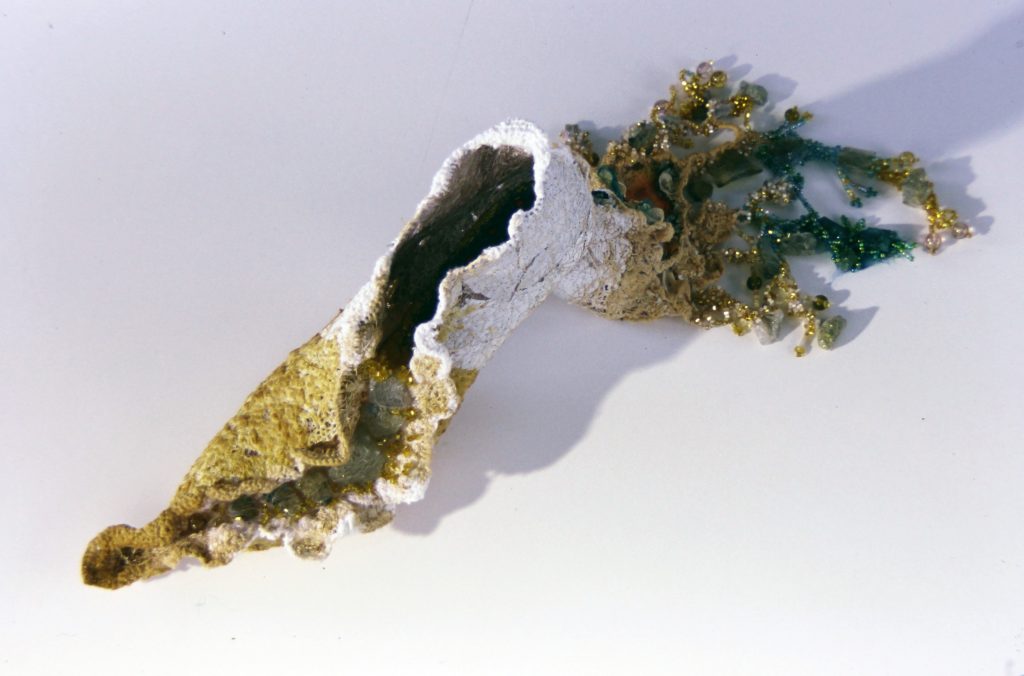
‘Shattered steps’ Series
The shoe from the ‘Venetian Water series’ came about from sitting at a canal’s edge where my eye level was with the waters.

‘Walking on Water’- series, detail
The cityscape around seemed to float on the water at this eye level.
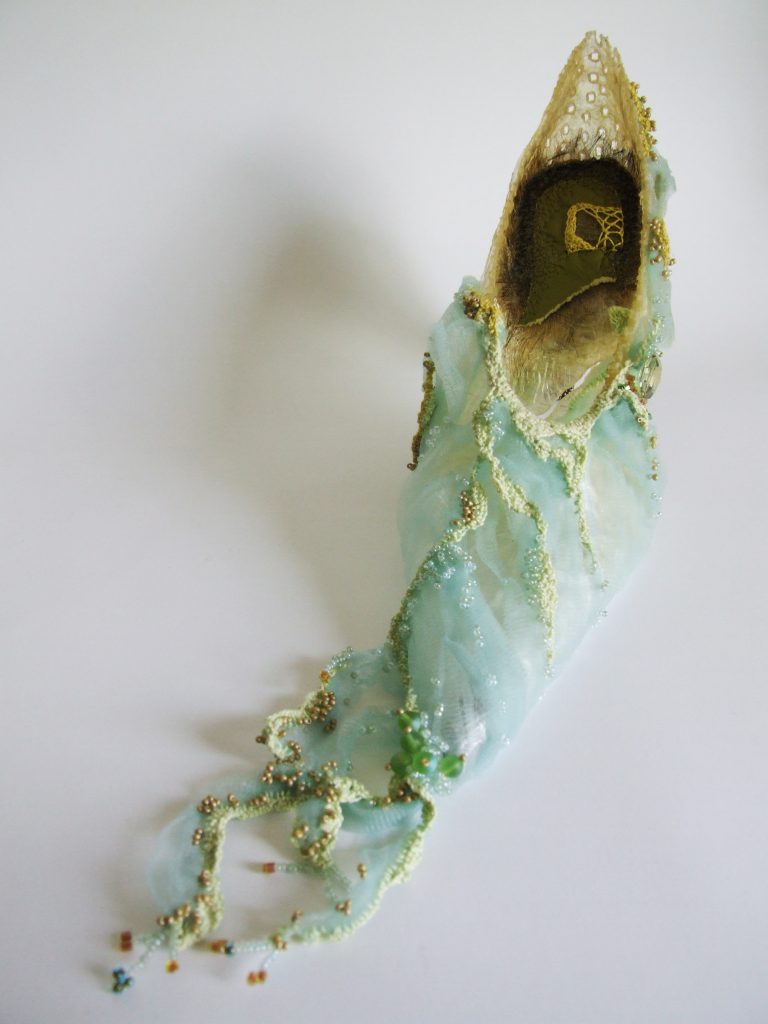
‘Walking on Water’- series
Discuss manipulation in one of your works.
Manipulation of a found material or object for me is part and parcel of contemporary embroidery practices. I like the transformation, giving a new interpretation, the subversive hand changing what already exists.

‘Cellotape’ Series
Often, I machine embroidered a new surface by the collage of chopped up laces / fabrics and (without giving all my secrets away) would ‘cook’ these. I like the happy accident and testing the unlimited possibilities of finding something new that can ‘say’ something that other materials or processes
cannot. I like finding the everyday, cast aside, cheap materials to work with. ‘Cellotape’ was a material that proved perfect for its colour / texture, and its transformed ‘read’.
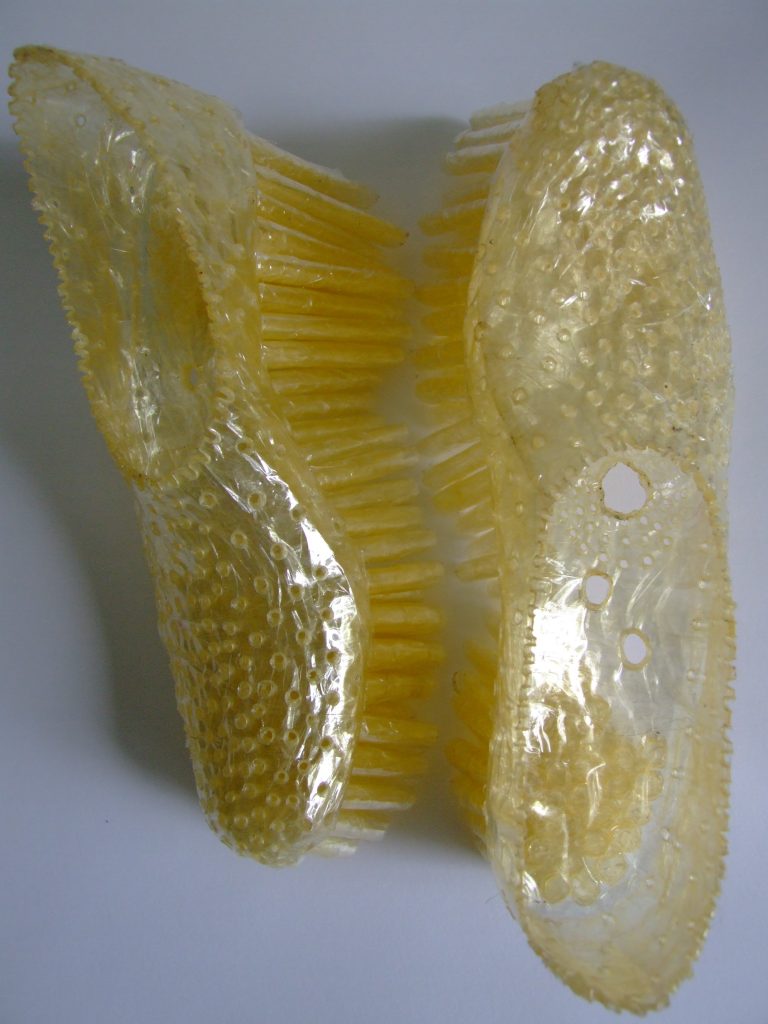
‘Cellotape’ Series
Expand on “Shoe Making Kit’.
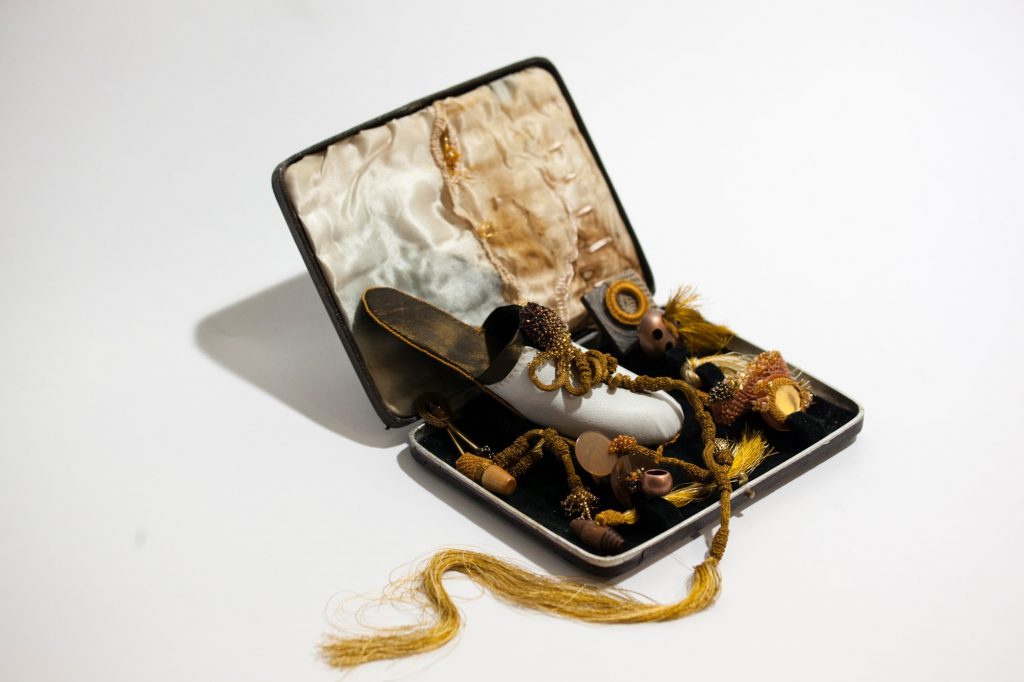
‘Shoe-Making Kit’ Series
I had come across a 18th Century shoe making box in the Applied Materials collection at Collins barrack in Dublin. The idea fascinated me, of these tool kits, often given as a leisure activity for middle class women; that then became an activity that women could make a living from. The production of flat pump / slippers; that were in vogue at the time, allowed women to have an independent income as well as women becoming consumers with discernment. The historical tools bear no resemblance to those used in the male cobbler shoes making craft.
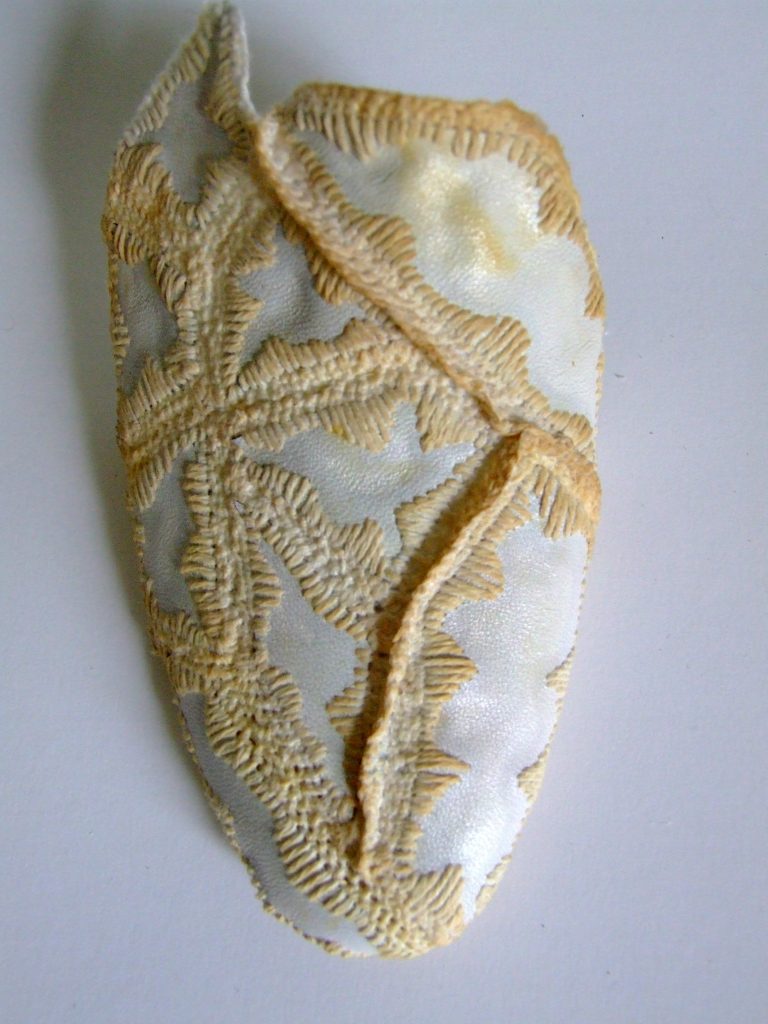
‘Vamp’, Sampling
While the shoe theme is still there in my work, I had moved from the single shoe artefact to that of
elements and details producing very different outcomes in the box presentations.
How do you find the themes for your work?
The shoe theme continues and develops through themes of narrative, gender and materiality.
Gone Fishing
What are you currently working on?
I am currently working on a body of new work that will coincide with a Symposium and Exhibition titled ‘(E) quality’.
Discuss your teaching and art practice and how you combine both?
This has developed over the years whereby I now locate my (published) writing with my practice in the Applied Materials domain. Having taught and practiced through design principles and practices, the Applied Materials ‘space’ links Design and Fine Art. Embroidery as an applied material is adaptable, with transferable knowledge and skills; adaptive to re imagine itself in new contexts.
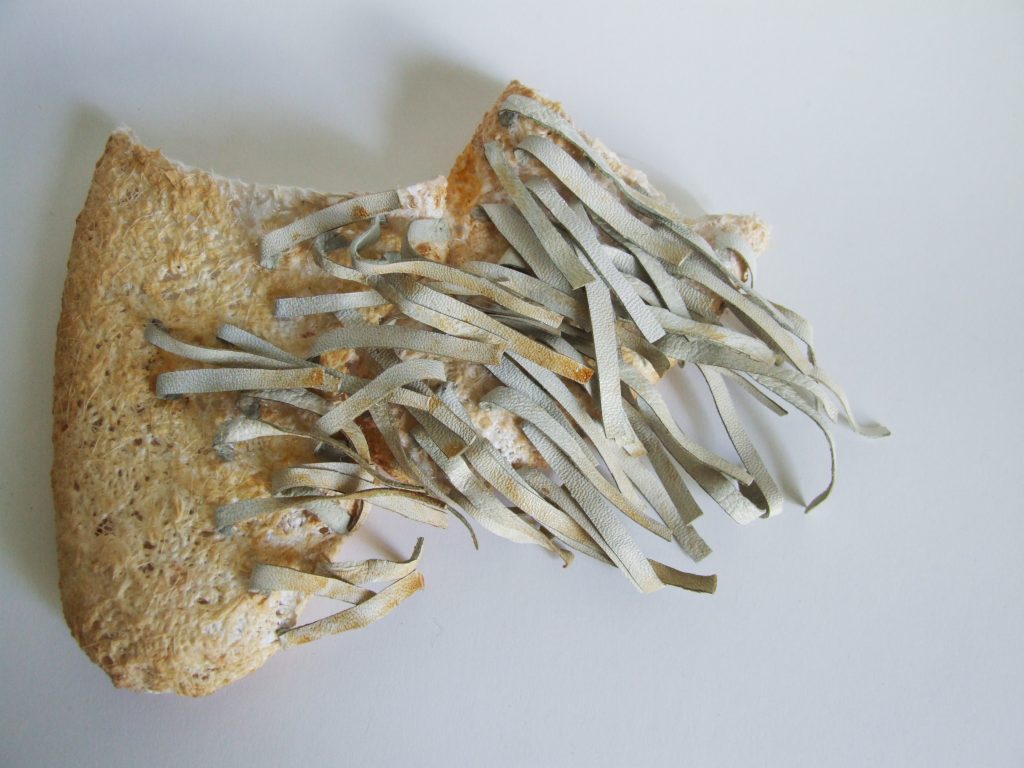
‘Vamp’, Sampling
My roots has always been with embroidery, yet there is no ‘sector’ in Ireland, so embroidery as a medium always has to adapt, reflect and be relevant in contemporary contexts. I find that exciting, that no two students have the same outcome. There is no trend- led ‘look’ but, a breadth and dept of engagement that is continually being re-imagined.
Why do shoes give such pleasure?
There is much to say and write about shoes and our (uneasy) relationship with them. Shoes still seem to define gender, …and so does embroidery. The study of both has often pigeon holed the maker.
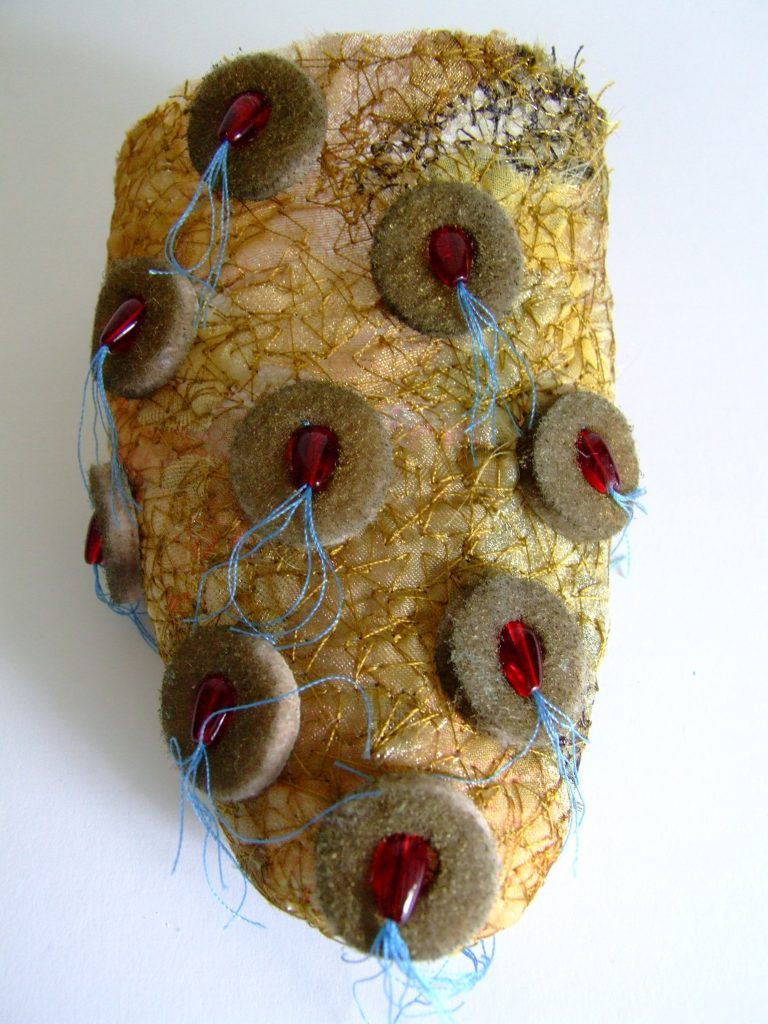
‘Vamp’, Sampling
Can you give your thoughts on the way textile art is perceived currently?
Textiles on the one hand has become so very popular, with the ever increase Guilds, groups and diverse platforms. Equilly, this popularity, especially if exhibited by women can be counter productive. Often still classed as a leisure pursuit, with a pervasive attitude that all and any can do. The practice and skill needed with soft materials is undervalued against the practice and skills needed with hard material processes.
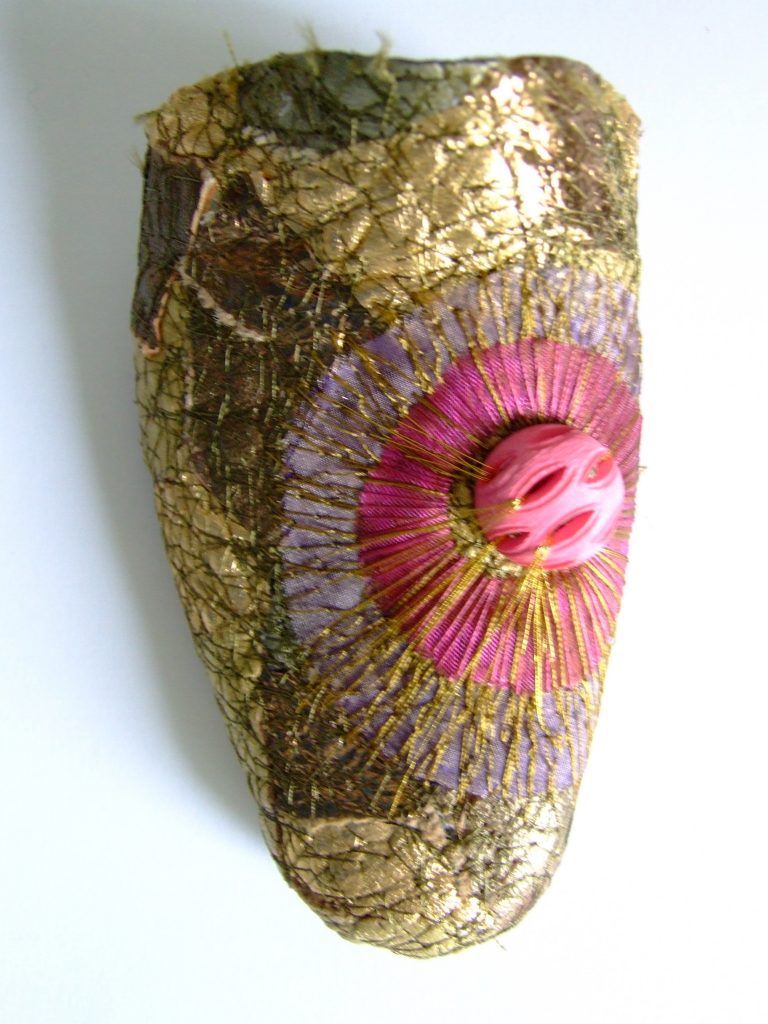
‘Vamp’, Sampling
Other countries seem to have a greater respect for the practitioner who works through soft materials but there still is a hierarchy in the arts. Applied Materials is often thought of as skill acquisition of a craft as opposed to the bed rock of design in the art and design institutes. It is not always understood as a very powerful medium that can communicate social, civic and political engagement.
Contact:
Helen McAllister
Helen McAllister <mcallisterh@staff.ncad.ie>
Deborah Blakeley, Melbourne, Australia
Interview by Deborah Blakeley, October 2019
Think a colleague or friend could benefit from this interview?
Knowledge is one of the biggest assets in any business. So why not forward this on to your friends and colleagues so they too can start taking advantage of the insightful information the artist has given?
Other artists you may be interested in:


